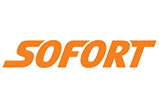Vintage Aizu Nuri Lacquered Writing Box Yagihashi with birds
Beautiful lacquered wooden Japanese writing box (Suzuribako) from the 1970-80s with the image of birds and flowers in gold.
Aizu lacquerware (called Aizu nuri in Japanese) is lacquerware made in the Aizu region of Fukushima prefecture. During the manufacturing process, the craft is classified into round pieces, such as bowls, and flat pieces such as trays or stationery boxes. Patterns combining pine, bamboo, plum, and hamaya (ritual arrows used to drive away devils) are called Aizu pictures. The distinct characteristics of Aizu lacquerware are its auspicious designs and decorations. Although during the Edo period (1603-1868) the colors black, vermillion, and green were often used, in modern times an opaque reddish brown or yellowish vermillion has been used, and color schemes created using a limited number of colors have also become an attraction. In addition, since the carved grooves are finer and shallower than in lacquerware produced in other areas, the decoration has a soft appearance. For the top coating, Aizu lacquerware employs techniques like coating with tetsusabinuri, which has an astringency similar to that of cast metal, achieved by using rust lacquer, or kinmushikuinuri which uses rice chaff to create a pattern. There are many other kinds of top-coating techniques, such as kijironuri, which brings out the beauty of the wood grain, or hananuri, which creates gloss through the addition of oil. Each technique requires the artisan to have advanced skills.
For surface decoration, keshifun maki-e is the representative technique of Aizu lacquerware.























